Imagined Futures with James Bradley, Jonathan Lethem, Emily St John Mandel & David Mitchell
Ashley Hay was given a hard task with these four authors, whose works feature dystopian or alternate worlds, those ‘imagined futures’. Not because of the authors themselves, of course, but because there was so much to unpack from each book’s weighty vision of our imperilled future.
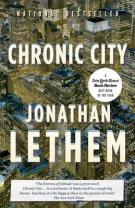 Jonathan Lethem is an American writer who, after early science fiction works, won the National Book Critics’ Circle Award in 1999 for his novel Motherless Brooklyn. He has received a MacArthur Fellowship (‘Genius Grant’). Chronic City is not his most recent work, but its story set in a strange version of New York in which a large tiger destroys buildings and a grey fog envelops part of the city, made him a worthy addition to the panel. The novel was named one of The New York Times’s ten best novels of 2009.
Jonathan Lethem is an American writer who, after early science fiction works, won the National Book Critics’ Circle Award in 1999 for his novel Motherless Brooklyn. He has received a MacArthur Fellowship (‘Genius Grant’). Chronic City is not his most recent work, but its story set in a strange version of New York in which a large tiger destroys buildings and a grey fog envelops part of the city, made him a worthy addition to the panel. The novel was named one of The New York Times’s ten best novels of 2009.
In response to Hay’s question to each of the panel, about what made their stories imperative when they wrote them, Jonathan Lethem spoke of his amazement and rage at the post-9/11 atmosphere that had taken (re-taken?) over New York City, where money had ‘gauzed over’ that horrific and galvanising event. There was ‘a fog of amnesiac displacement’. After 9/11 the city had looked both outward and inward, at the causes of the attack, questioning American geo-political stances. And here it was, only 3 years later, and it had been swept away by greed and the mighty dollar. Chronic City was a response to that.
David Mitchell, author of the genre-bending The Bone Clocks (my review here), said the original idea was to follow the life of a single 75 year old person in ‘micro stories’, with one for each year of her life. He soon realised, however, that writing from the point of view of a new born baby was ‘problematic’(!), and thus opted for a novella per decade. He wanted to explore time, deep time, and asked himself what you would pay for a Faustian pact to avoid mortality.
 Canadian Emily St John Mandel’s acclaimed novel Station Eleven was a finalist in the 2014 National Book Award (US). Her earlier work was in the area of crime fiction, and she said she wanted to break free from that area before she was pigeon-holed. Her story follows an amateur theatre group travelling the countryside after a flu pandemic has wiped out 99% of the population. When she began thinking about a post-apocalyptic world, she figured that the disaster wouldn’t last forever. Her novel deals not with the pandemic but with the aftermath.
Canadian Emily St John Mandel’s acclaimed novel Station Eleven was a finalist in the 2014 National Book Award (US). Her earlier work was in the area of crime fiction, and she said she wanted to break free from that area before she was pigeon-holed. Her story follows an amateur theatre group travelling the countryside after a flu pandemic has wiped out 99% of the population. When she began thinking about a post-apocalyptic world, she figured that the disaster wouldn’t last forever. Her novel deals not with the pandemic but with the aftermath.
 I read James Bradley’s Clade earlier this year (not reviewed). It’s a novel of ambition, following one family over three generations, well into the future, in a vastly changed environment. It has some wonderful writing, and some disturbing environmental catastrophes. He set out to write a novel of climate change, a subject that is ‘very resistant to fiction’. He wanted to link large geological time with a human story, one that had both continuity and rupture. His story echoes Mandel’s in this way, because while the world falls apart life goes on.
I read James Bradley’s Clade earlier this year (not reviewed). It’s a novel of ambition, following one family over three generations, well into the future, in a vastly changed environment. It has some wonderful writing, and some disturbing environmental catastrophes. He set out to write a novel of climate change, a subject that is ‘very resistant to fiction’. He wanted to link large geological time with a human story, one that had both continuity and rupture. His story echoes Mandel’s in this way, because while the world falls apart life goes on.
Hay asked whether the Dark Ages were an inspiration for any of the writers. Mandel said she didn’t need to look back. There was enough ‘economic ruination’ in post-GFC America for inspiration as to how things might look and feel.
Bradley spoke of the decline in species numbers, particularly in birds. He noted the massive decline in bee numbers. Lots of things that scientists had said were markers of real tipping points, things he put in the book, have worryingly come to pass in recent months, from the release of methane from Siberian permafrost to a change in the earth’s rotation as the result of ice melting at the poles.
Lethem also spoke to birds and how we have become disconnected from the wild in cities, giving the example of some New Yorkers’ reactions to a single red-tailed hawk, which built a nest on a co-op building in New York. Some occupants of the building were happy to see it, whereas others felt it diminished the value of their homes and wanted rid of it.
 Lethem then spoke of one of the most disturbing things I think I’ve ever heard. After 9/11, once the twin towers’ scrap metal had been sifted through for remains,, the metal was melted down and used to build an aircraft carrier, which was subsequently used in the Gulf War. It was as if the USA were taking the graves of all those lost and using them as a ‘sword with which it could smite’ the country’s perceived enemies. How could this type of thing happen? He recalled seeing this same aircraft carrier sail into New York Harbour some years later, and the response in his heart to seeing this weapon of war.
Lethem then spoke of one of the most disturbing things I think I’ve ever heard. After 9/11, once the twin towers’ scrap metal had been sifted through for remains,, the metal was melted down and used to build an aircraft carrier, which was subsequently used in the Gulf War. It was as if the USA were taking the graves of all those lost and using them as a ‘sword with which it could smite’ the country’s perceived enemies. How could this type of thing happen? He recalled seeing this same aircraft carrier sail into New York Harbour some years later, and the response in his heart to seeing this weapon of war.
 Mitchell entered the discussion here, tying together some of the other panellists’ thoughts, by asking if anyone had read The World Without Us by Alan Weisman, which explores the way nature reclaims and regenerates if it is left to its own devices,, and which Mitchell declared as excellent. Birds, he said, fare very well; the descendants of dinosaurs survive and thrive if and when humanity finally loses its foothold on the planet.
Mitchell entered the discussion here, tying together some of the other panellists’ thoughts, by asking if anyone had read The World Without Us by Alan Weisman, which explores the way nature reclaims and regenerates if it is left to its own devices,, and which Mitchell declared as excellent. Birds, he said, fare very well; the descendants of dinosaurs survive and thrive if and when humanity finally loses its foothold on the planet.
 Mitchell was asked by Hay about his uber novel, and rather than say he is ‘inking-in his large sheet of paper like a map’, as he did the night before, he said simply, ‘I’m not that clever,’ but he did admit to planning ahead a little more than he had in the past, placing some of his characters in ‘scenarios’, including Marinus, one of his favourites. So maybe there is a little more of the map being inked behind the scenes, so to speak.
Mitchell was asked by Hay about his uber novel, and rather than say he is ‘inking-in his large sheet of paper like a map’, as he did the night before, he said simply, ‘I’m not that clever,’ but he did admit to planning ahead a little more than he had in the past, placing some of his characters in ‘scenarios’, including Marinus, one of his favourites. So maybe there is a little more of the map being inked behind the scenes, so to speak.
Did actors, which appeared in several of the novels, asked Hay, provide the authors with an element of ‘performance’ they were seeking, or some sort of subterfuge? Mandel thought all characters are actors in a way. She had no specific reason for her choice other than her own experience with people she knew in off-off-off-Broadway(!) amateur theatre companies, in which to be a part meant you really loved the art because there was no way you were ever going to be paid for it. Her story did, however, feature a comic book, which allowed her extra freedom because she could use different language in it, words that characters wouldn’t.
Lethem made the point that while his book features a sit-com actor, he is an actor rather than an artist. Bradley said there is a merging of real and virtual worlds. He spoke about what was for me one of the most interesting things in his book, so-called ‘sims’, in which photos and videos and other visual records of a person are made into simulations of the person after they die so their loved ones can still interact with them. The sims are fitted with learning algorithms that allow them to learn how to better respond to their loved ones. So you can have these walking ghosts in your house. But the technology also allows loved ones to massage the sims, meaning they can wipe out the ‘bad’ traits of the person who has died! In a way, the sims provide us with a way of reincarnating us. But, like in Mitchell’s work, they are very poor representations of real humans. Something very important is lost in their construction. It’s not a way to truly live.
Hay raised the notion of hope. Is there a place for it? She liked to think there was a place for it in all of the novels. I didn’t take too many notes here, so I’d advise listening to the podcast when it becomes available, but in each of Mitchell, Bradley and Mandel’s work there is a note of hope at the end. You’ll have to read the Lethem to find out what he thinks!
It was an excellent session, with the wonderful Ashley Hay doing a sterling job: see my Saturday ‘Thumbs’ below for more on her…
Ben Okri: The Age of Magic
 Winner of the Booker Prize for his novel The Famished Road (which I loved), Ben Okri’s latest novel The Age of Magic follows eight people on a journey to make a film documentary about Arcadia. I dearly wanted to see Okri in another session with two acclaimed Australian poets: Les Murray and David Malouf, but that session clashed with another I attended, so instead I saw him in discussion with Radio National’s Michael Cathcart, talking about The Age of Magic. The session is available to listen to online at Radio National here.
Winner of the Booker Prize for his novel The Famished Road (which I loved), Ben Okri’s latest novel The Age of Magic follows eight people on a journey to make a film documentary about Arcadia. I dearly wanted to see Okri in another session with two acclaimed Australian poets: Les Murray and David Malouf, but that session clashed with another I attended, so instead I saw him in discussion with Radio National’s Michael Cathcart, talking about The Age of Magic. The session is available to listen to online at Radio National here.
I highly recommend it. Okri is such a pleasure to listen to: measured, scholarly and playful. He read from the book and some poetry too.
Cathcart opened up by asking what a ‘quilf’ (spelling?) is. Okri said it’s ‘an imaginary real creature’ that the novel is loosely structured around. He experienced on a walk in Switzerland. They never appear before you, but ‘hover at the margin of your vision’. Such a spirit-being makes two ‘appearances’ in Okri’s novel. He later said he tries to capture the extra dimensionality of life.
The Age of Magic has several premises, said Okri. One is the idea that while we live in an age of historical times, there is also a constant ‘under-river of consciousness and being’, a magical fabric to the whole of existence. He wanted to touch upon this magic that underlies our existence. The more ostensible is eight people going to Arcadia to make a film documentary. But don’t be fooled! It’s all about the secret premise.
‘Eviling’: an anti-magical activity that is used in the story. There are real characters and liminal characters. It is full of aphorisms.
The book opens with a chapter comprised of a single sentence: ‘Some things only become clear much later.’ This began as a three page chapter, and he compressed and compressed it into one sentence which has ‘all the power of everything that has been removed’. Okri playfully admonished Cathcart for reading out this sentence too quickly, and then read it out ‘as it should be read’, which was very slowly!
One character says ‘it’s easier to be clever than to listen’. Listening, said Okri, is ‘quite close to suffering’. Learning to write is about ‘very, very deep listening’. There are three levels of listening: ordinary, deep, and ‘shockingly profound’! You have to listen. Not just to what is said, but also to what is not said. Listening stands in for ‘profound attentiveness’. Okri said ‘I’m a world listener’.
One character, Jim, believes, as we believe, that will is the key thing in life. And yes, civilisations can’t be built without will. But will alone is madness. We need something higher than will/ego.
Okri is fascinated by the making of language. ‘Live’ turned around is ‘evil’. Live is an active presence of life. Evil is the opposite of anti-growing aspect of life.
Cathcart noted there are several references to Faust in the novel. Okri said: that which we go towards compels us to change. If we are on a quest for money, money changes us. The same is true for any journey. That’s why all quest novels are about the inward journey as much as the outward journey. In the middle of Faust, there is a play about Arcadia, so it cohered with the story.
Cathcart asked about radiance, which seems an important element in Okri’s body of work. Radiance is a very difficult thing to write about, but is the necessary flip slip to the darkness. Every writer should write the other side of the coin to their principal theme. We are very focussed on suffering. There was great happiness in his childhood even when there was great suffering. There’s something about childhood afternoons that make them feel like twenty years, the glow of them in Nigeria. There is something enchanting about being life, but enchantment must come through very briefly in writing.
Okri was asked about yoga and meditation. He meditates, if meditation means to think. In the East, Zen masters talk about emptiness. In the West, we think too much, fill our heads with thoughts. We must empty our minds. Emptiness is the place from which creation comes.
One childhood experience he related was about telling stories. He grew up in a story-telling universe. Everything at that age oozed stories. A tree, a dog, even a car can drip stories. In the village, the children sat in a circle and told stories but each child had to invent a story. If you couldn’t tell some original you were kicked out of the group!
His period of homelessness in the UK, where his university founding ran dry all of a sudden and he became poor and destitute very quickly. He still managed to read and have books close to him. Reading keeps hunger at bay. You could just fall through the net in this world and nothing would catch you. This period seeded in him an understanding of need, which fuelled his Booker Prize win ten years later. ‘I wrote my way back into life’.
He was asked about Nigerian and English story-telling, whether he was synthesising both. Yes, but Nigeria needs a new kind of language to capture it. He spent years trying to find the right tone and language. He went right back to basic A-B-C, so he could use words to ‘touch’ the world. It is the weakness of the 19th century novel that it cannot capture the non-linearity of modern life.
Asked about the pressure African writers are under, he said they should not be bound to write solely the troubled African stories, of suffering, famine, bad government and so on. The writer’s primary domain is freedom, the ability to write about what they want. France has a great literary tradition, as does the UK, where there is joy as well as suffering. Publishers also constrain African writers, he said, pigeon-holing them as ‘cause’ or ‘issue’ writers, which he finds deeply unfair.
He was also asked about winning the ‘Bad Sex in Fiction Award’, which he explained away quite beautifully by saying the English are too uptight about sex!
Book Design, or ‘Architects of Reading’
Kudos to festival organisers for including a session on book design once again, one of my personal favourites, although it was a vastly different topic than previous years, which usually focussed on the winning designs in the annual Book Design Awards. The session was entitled ‘Architects of Reading’, and focussed on the future form of books. Poor Zoë Sadokierski spent much of the session keeping the book design institution that is WH Chong (Text Publishing) from warring with Google’s Tom Uglow about physical books versus books that might, in future, become more like apps. And not just apps, because Uglow foresees the technology allowing the story to change based on the reader’s activity. He also gave the example of a story about deception, in which every time you went back to the ‘novel’ it would change on you, or deceive you, allowing the story’s form to mirror theme. Chong said this verged on becoming a ‘video game’. Not surprisingly, Chong championed the physical book, with its ‘perfect technology’. It’s a hugely interesting area for discussion, and I would have liked more on it, but was happy to see an example of Chong’s vast marginalia!
Saturday ‘Thumbs’
Thumbs down for: an unnamed writer on one panel session whose reading went on, and on, and on… I mean the writing was good, but as an audience member you just want a little taste, particularly if there are other writers on a panel you want to hear from.
Thumbs up for: Ashely Hay. What a gem she is, a fabulous writer in her own right and a great chair of a rather large panel. She got the best out of four people in under an hour, and also fielded a rather curly question from a young girl in the audience who asked her, much to everyone’s amusement, which of the four novels was her favourite and which she would recommend to a girl of her age! Cue much squirming from Hay under the mock stare of intensity from all four writers waiting to see which of them she would select, but after much sighing she somehow managed to pick one (Mandel’s book) without upsetting anyone!
Next up, Sunday at the festival…
 Solar bones by Mike McCormack: wow, the Irish really have it going on, don’t they? If Eimear McBride and Lisa McInerney (gritty and prize-winning The glorious heresies) weren’t enough to convince you of this, then Solar bones will. An audacious stream-of-consciousness novel without a single – yes, that’s right: a single! – full stop in sight. A ‘simple’ story about an ordinary family man but in McCormack’s hands it is transcendent. Solar bones won the 2016 Goldsmith’s Prize, which in only its fourth year is proving to be a ripper of a prize, whose purpose is to “celebrate the qualities of creative daring associated with the University and to reward fiction that breaks the mould or extends the possibilities of the novel form”. Solar bones does just that.
Solar bones by Mike McCormack: wow, the Irish really have it going on, don’t they? If Eimear McBride and Lisa McInerney (gritty and prize-winning The glorious heresies) weren’t enough to convince you of this, then Solar bones will. An audacious stream-of-consciousness novel without a single – yes, that’s right: a single! – full stop in sight. A ‘simple’ story about an ordinary family man but in McCormack’s hands it is transcendent. Solar bones won the 2016 Goldsmith’s Prize, which in only its fourth year is proving to be a ripper of a prize, whose purpose is to “celebrate the qualities of creative daring associated with the University and to reward fiction that breaks the mould or extends the possibilities of the novel form”. Solar bones does just that.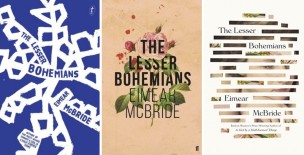 The lesser bohemians by Eimear McBride: another coming-of-age story from the Irish sensation, with wall-to-wall sex, and self sabotaging, so it’s not for everyone, but it’s worth the journey, with a fabulous ending. McBride’s now signature prose style is more accessible here than in her glorious (Goldsmith Prize-winning!) debut A girl is a half-formed thing. And you have to admire a writer who says James Joyce is her major influence. I think he’d be proud of this much-anticipated second novel.
The lesser bohemians by Eimear McBride: another coming-of-age story from the Irish sensation, with wall-to-wall sex, and self sabotaging, so it’s not for everyone, but it’s worth the journey, with a fabulous ending. McBride’s now signature prose style is more accessible here than in her glorious (Goldsmith Prize-winning!) debut A girl is a half-formed thing. And you have to admire a writer who says James Joyce is her major influence. I think he’d be proud of this much-anticipated second novel.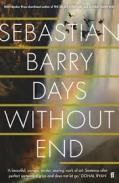 Days without end by Sebastian Barry. Fuses elements of Cormac McCarthy’s Blood meridian, Annie Proulx’s Brokeback mountain, with a dash of Aussie movie Priscilla: queen of the desert. What makes this a standout is Barry’s singular narrative voice that is so of its time and locale (Civil War era America) that it rivals Peter Carey’s similar feat in his Booker winner True history of the Kelly gang. I had serious doubts before I read it given I admire Blood Meridian greatly but DWE stands on its own feet.
Days without end by Sebastian Barry. Fuses elements of Cormac McCarthy’s Blood meridian, Annie Proulx’s Brokeback mountain, with a dash of Aussie movie Priscilla: queen of the desert. What makes this a standout is Barry’s singular narrative voice that is so of its time and locale (Civil War era America) that it rivals Peter Carey’s similar feat in his Booker winner True history of the Kelly gang. I had serious doubts before I read it given I admire Blood Meridian greatly but DWE stands on its own feet. Moonglow by Michael Chabon. Simply sublime. Chabon is such a thoughtful writer. Inserting himself into the action in this delightfully faux memoir, he takes his family history as the starting point for fiction, tracing a story of his (invented) grandparents, particularly his grandfather, who was on the hunt for Nazi rocket scientist Wernher von Bruan as WWII came to an end. Flits effortlessly between multiple time frames in the twentieth century. Family secrets abound, and the one Chabon ‘discovers’ about his own bloodline is jaw-dropping.
Moonglow by Michael Chabon. Simply sublime. Chabon is such a thoughtful writer. Inserting himself into the action in this delightfully faux memoir, he takes his family history as the starting point for fiction, tracing a story of his (invented) grandparents, particularly his grandfather, who was on the hunt for Nazi rocket scientist Wernher von Bruan as WWII came to an end. Flits effortlessly between multiple time frames in the twentieth century. Family secrets abound, and the one Chabon ‘discovers’ about his own bloodline is jaw-dropping.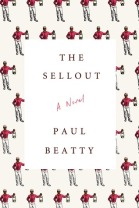 The Sellout by Paul Beatty. I was ahead of the Booker game last year, reading this before it was even longlisted. What can I say? Daring. Subversive. Funny. A biting satire on race-relations in the US. The narrator, whose nickname is the Sellout, takes on the US government in the Supreme Court in a bid to reinstate slavery. That’s just one strand of this riot of a book. Along the way we see a reworking of Huckleberry Finn, while Dickens’s Great Expectations becomes Measured Expectations. Oh, and the Sellout also credits Tennyson with the start of gangster rap. A wild ride. Often uncomfortable. Not for the fainthearted. Loses a bit of traction in the middle, but it’s not about plot, it’s about making a point. Beatty does that and more.
The Sellout by Paul Beatty. I was ahead of the Booker game last year, reading this before it was even longlisted. What can I say? Daring. Subversive. Funny. A biting satire on race-relations in the US. The narrator, whose nickname is the Sellout, takes on the US government in the Supreme Court in a bid to reinstate slavery. That’s just one strand of this riot of a book. Along the way we see a reworking of Huckleberry Finn, while Dickens’s Great Expectations becomes Measured Expectations. Oh, and the Sellout also credits Tennyson with the start of gangster rap. A wild ride. Often uncomfortable. Not for the fainthearted. Loses a bit of traction in the middle, but it’s not about plot, it’s about making a point. Beatty does that and more. Autum by Ali Smith, the first in her seasonal tetralogy that explores our experience of time. Ah, Ali Smith, reading her is like the best of hugs (if you’re a hugging person!). She’s so inventive and playful and clever. Some hilarious Kafkaesque moments (passport application in the local post office ring any bells?!), pinned against a very fresh take on Brexit (the first post-vote novel?) and the rise of humanity’s darker side in the UK and the lack of dialogue that has come with it (a global issue to be sure). A hymn to transient life. I think the four novels, once done and taken together, will be really special. (Fab cover art too,, from David Hockney. Can’t wait to see the others!)
Autum by Ali Smith, the first in her seasonal tetralogy that explores our experience of time. Ah, Ali Smith, reading her is like the best of hugs (if you’re a hugging person!). She’s so inventive and playful and clever. Some hilarious Kafkaesque moments (passport application in the local post office ring any bells?!), pinned against a very fresh take on Brexit (the first post-vote novel?) and the rise of humanity’s darker side in the UK and the lack of dialogue that has come with it (a global issue to be sure). A hymn to transient life. I think the four novels, once done and taken together, will be really special. (Fab cover art too,, from David Hockney. Can’t wait to see the others!)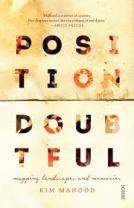 Position doubtful by Kim Mahood. A fabulous memoir and a must for anyone seeking to better understand the nexus between white and Indigenous Australia. Mahood writes with the eye of an artist, the mind of a poet, and the soul of someone born of the desert country. An intensely moving personal journey, and a wonderful tribute to the stunning Tanami desert and lake landscape and the many friends loved and lost over decades of inland travels. Assuming it’s eligible this year, if it doesn’t get shortlisted for the Stella Prize (and many others) then there’s something seriously wrong.
Position doubtful by Kim Mahood. A fabulous memoir and a must for anyone seeking to better understand the nexus between white and Indigenous Australia. Mahood writes with the eye of an artist, the mind of a poet, and the soul of someone born of the desert country. An intensely moving personal journey, and a wonderful tribute to the stunning Tanami desert and lake landscape and the many friends loved and lost over decades of inland travels. Assuming it’s eligible this year, if it doesn’t get shortlisted for the Stella Prize (and many others) then there’s something seriously wrong.





























